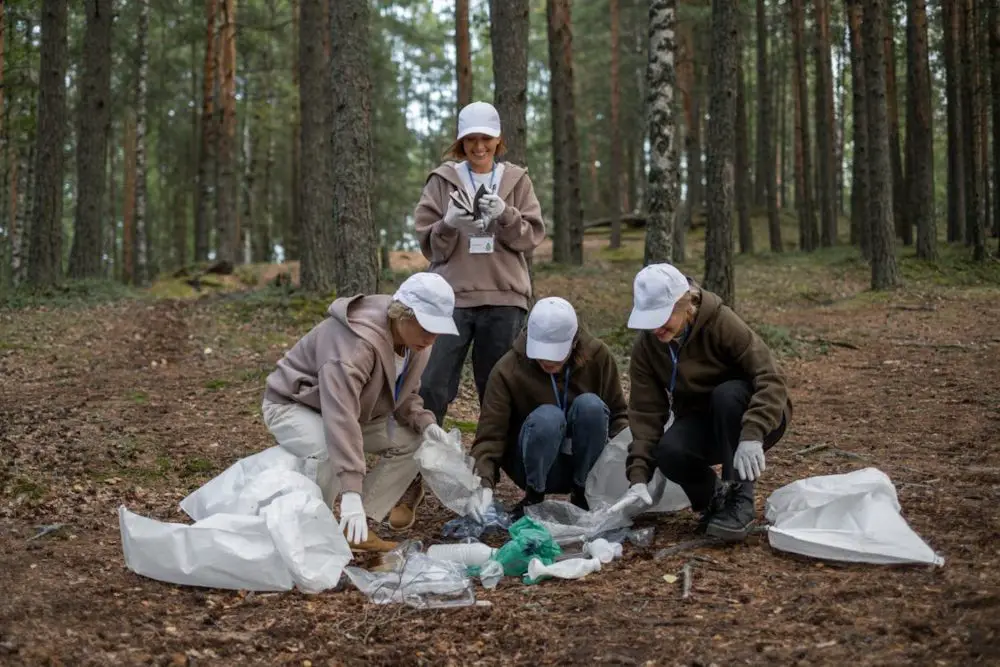Community cleanup events unite people for one common goal — helping the environment and enhancing our communities. This causes community and identity to develop and plays an essential part in the efforts of the local environmentalists.
Contents
Mastering the Art of Community Cleanup Coordination
Whether you belong to a local community group, a nonprofit organization, or you’re an individual, organizing a community cleanup is a rewarding and impactful endeavor.

Nonetheless, the achievement of such an event depends on comprehensive planning and organization. All the details matter, including obtaining the appropriate tools and equipment, involving the community, and waste management.
To properly dispose of the waste collected during these events, a super-sized 40-yard dumpster is just what you need for efficient and environment-friendly waste management.
The Preparation Stage is Critical in Community Cleanup
Taking time for thorough planning is crucial when organizing a community cleanup event. Several key elements must be considered here: choosing the target area, setting the date, and determining the scope.
Opt for a location where your efforts clearly show impacts. Examples include local parks and playgrounds, beaches, riverbanks, or litter-filled neighborhoods. When participants can see that they have made a real difference, they are much more likely to volunteer again!
Weekends and/or public holidays are ideal timing as they allow more volunteer participation but you may need to have some flexibility if the weather decides to ‘rain on your parade’.

Community Involvement Boosts Success.
Using social media, newspapers, community boards, and word-of-mouth to spread awareness is crucial in informing possible participants. Incentivization, done by recognition or sponsorships, drives local businesses, schools, and organizations to participate.
The higher the number of people who feel they belong and are appreciated, the higher the participation rate and, hence, the quality of the impact. Logistics ensure smooth operations.
Planning a neighborhood clean-up event is more than just rounding up volunteers and choosing a place. A successful event is based on logistics, which are intended to ensure that everything flows in a well-orchestrated manner from the beginning to the end.
Check-in areas are the beginning of getting volunteers organized and supplies appropriately distributed. Such an arrangement makes the process efficient so volunteers can start the task immediately without confusion.
Providing participants with the appropriate tools is essential for successful clean-up. Doing so avoids potential challenges and, at the same time, ensures the safety of those who volunteered to undertake the cleaning activity. The right tools and equipment are crucial for safe and effective waste management allowing volunteers to participate without risking injury or their health.
Waste removal planning is a key element of a successful event. Depending on the size and scope of the cleanup, a colossal 40-yard debris dumpster rental may be needed. This guarantees that all waste is disposed of correctly and does not harm the environment.
Proper waste removal planning before the event will allow the organizers to make the clean-up more effective for the community and the environment.
Safety First
The safety of the volunteers should be a top priority of a community cleanup event. The organizers must inform the participants about safety protocols and provide the required equipment so that they can safely dispose of the waste. Awareness of the waste management process and an appropriate contact person in case of an emergency are essential for the safety of volunteers.
All participants should ‘sign on’ and ‘sign off’ when finishing. They should also be briefed on basic work and health safety requirements including the need for and use of personal protective equipment necessity, and the importance of regular.
Apart from the physical safety precautions, one should consider health guidelines that have become relevant given recent worldwide health issues. Some measures on social distancing and other health requirements may be needed to avoid events associated with health hazards. Prioritizing volunteer safety can enable organizations to create a positive and secure environment for all parties.

The Big Day
The details of this primary day have been discussed a hundred times and initiated today; every moment of planning and preparation has paid off. As this first contact with the volunteers is made, they must be encouraged by, amongst other things, being given a specific, achievable goal while also instilling a sense of pride in doing something meaningful for their community.
This is the first interaction of great importance because it will build the day’s tone and facilitate generating a collective and enthusiastic environment. Listing the schedule for the day and the objectives and informing everyone of their roles in the volunteer work can be a common ground to everyone and promises not only cooperation but also meaning to their contribution.
If you are running a large event or working in an area with lots of rubbish, you’ll need an extra large 40-yard dumpster. The last thing any organizer wants is to find the dumpster they have on hand is unable to hold the collected rubbish.
Key to Lasting Impact
The process of preparing for community cleanup ends, but the travails of the journey continue. The follow-up and feedback stage is essential in reinforcing the success of the event. Doing so lays the foundation for future activities.
Conduct a debriefing session with your team and volunteers right after the clean-up. This may be an informal get-together at the event venue or a more official session in a day or so. In this meeting, you should promote a culture of open and honest feedback on what went right and what needed improvement. This is also an excellent opportunity to appreciate everyone’s hard work and commitment with certificates of appreciation or small gifts.
Feedback could even be obtained via the web or feedback forms. This opens up the possibility for people who may be shy in person to provide their input and discuss their ideas. Synthesize this information to gain clarity on the event’s strengths and weaknesses from different angles.
Another important element is evaluating the cleanup outcomes. Measure the success of the event by the weight of waste collected, the number of participants, and any other applicable metrics. Disseminate these results in the community through social media, local newspapers, or newsletters. This highlights tangible results and strengthens the role of community participation in environmental stewardship.
A Worthwhile Effort
Organizing a community cleanup takes work, but rewards abound. A cleaner environment, strong community spirit, and shared responsibility. Careful planning with large dumpsters, engaging the community, and prioritizing safety. Follow these tips for an impactful event that leaves a lasting, positive impact. Together, we create cleaner, greener communities for all.




